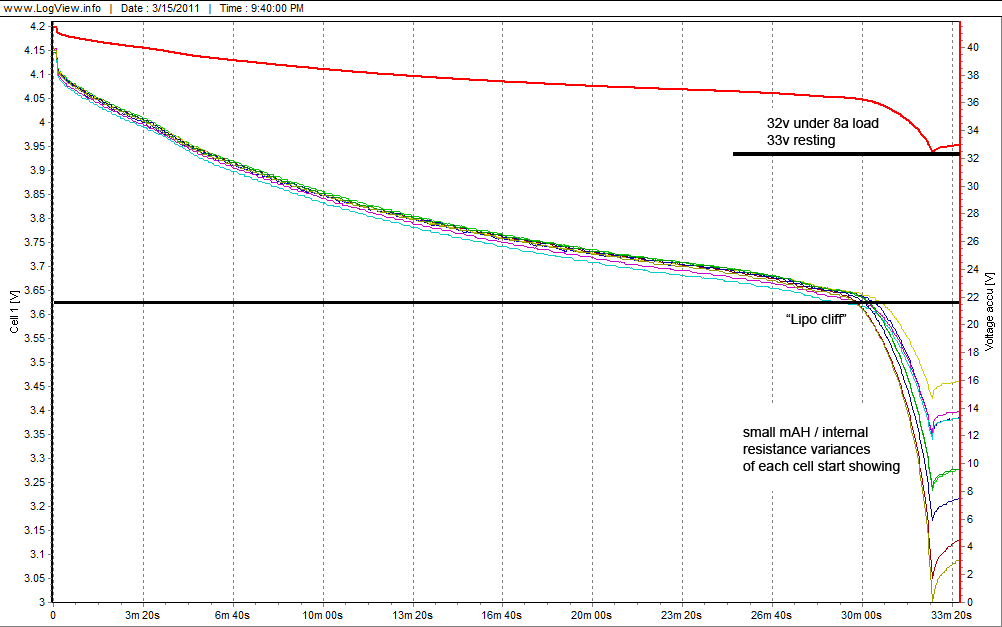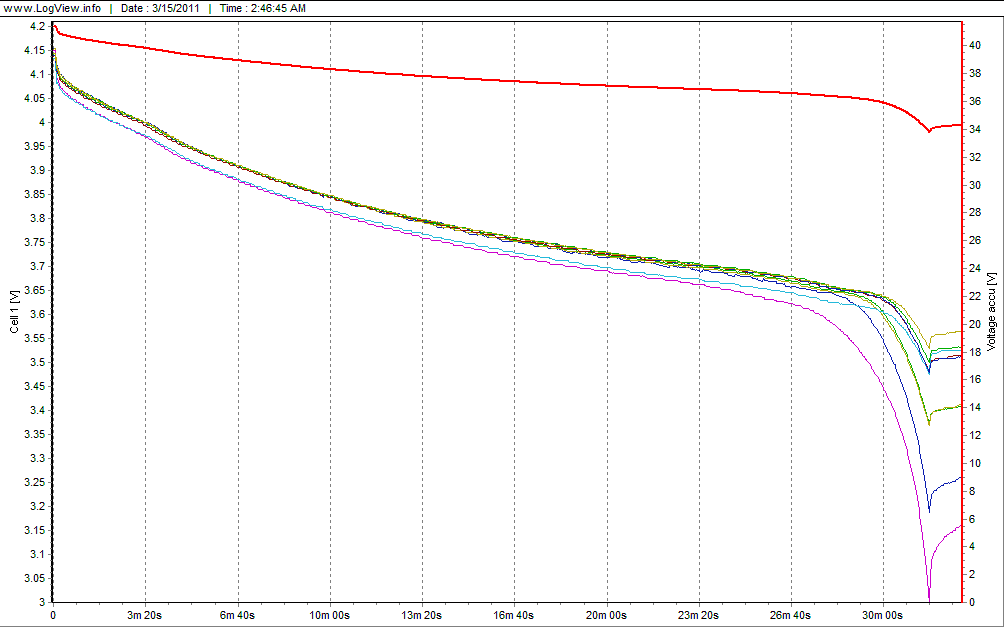kZs0lt
100 W
Great, capacity looks good so far.
If it was charged to 11.6v that is about 60-70% full, this cell could probably deliver 1500+mAh at this small C-rate.
Since you have an amp meter now, you should make some internal resistance measurements. Measure voltage under no load, then measure voltage drop under different (0.2C, 0.5C, 1C, 2C) loads. You should make these measurements at aprox 50% DOD, or about 3.8v/cell.
Keep posting the test data, thanks...
If it was charged to 11.6v that is about 60-70% full, this cell could probably deliver 1500+mAh at this small C-rate.
Since you have an amp meter now, you should make some internal resistance measurements. Measure voltage under no load, then measure voltage drop under different (0.2C, 0.5C, 1C, 2C) loads. You should make these measurements at aprox 50% DOD, or about 3.8v/cell.
Keep posting the test data, thanks...







